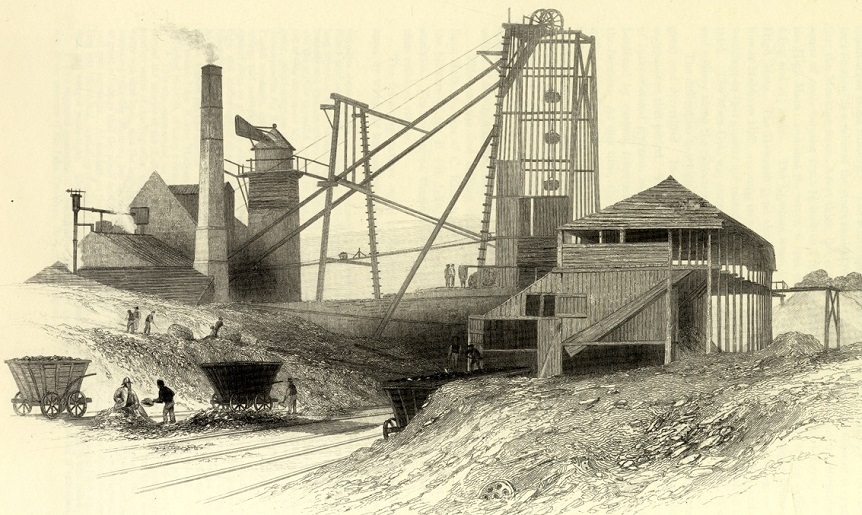
Developments at the Pit-head

Introduction
Although – apart from the vital innovation of steam-engine pumping – there were no technological inventions in the mining of coal, coal mines did change substantially 1700-1900.
After you have studied this webpage, answer the question sheet by clicking on the 'Time to Work' icon at the top of the page.
1 Harrington Mill Pit Colliery in Northumberland, c.1770

Interrogating Source 1:
Point out: • the shaft into the ground (labelled A);
• the winding gear, used to
lower miners down the shaft;
• the whim-gin – the horse wheel
that was in earlier days used to lower the miners down the shaft;
• the steam engine house, where
a new steam engine powered the winding machinery which lowered the
miners into the pit and brought up the coal;
• the steam engine's copper
boiler behind the house;
• the pile of coal in the
foreground;
• a basket used to bring coal up the shaft;
• the loading platform, where the coal was sorted into sizes and loaded onto packhorses.
2 Hebburn Colliery in County Durham, c.1844

Interrogating Source 2:
Point out:
• the downcast shaft, with corves (coal tubs) being drawn out of the mine;
• the winding gear, used to
lower miners down the shaft and to bring up the coal corves;
• the steam engine house, with its chimney, where a steam engine was used to power the winding gear;
• the upcast shaft, with a wind-vane to turn the chimney opening away from the wind at all times;
• the screening sheds, where the
coal was sorted into different sizes;
• the railway, on which the coal was taken away to be sold
(note the distinctive chaldron wagons).